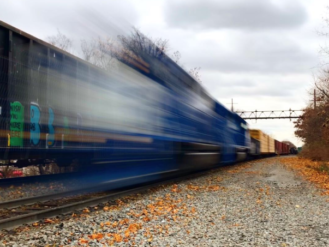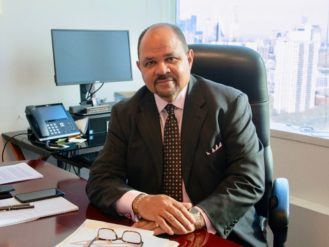Ahoy! How Brooklyn’s Marine Terminal Came Back to Life
The Sunset Park facility is humming again, helping fuel the neighborhood's industrial surge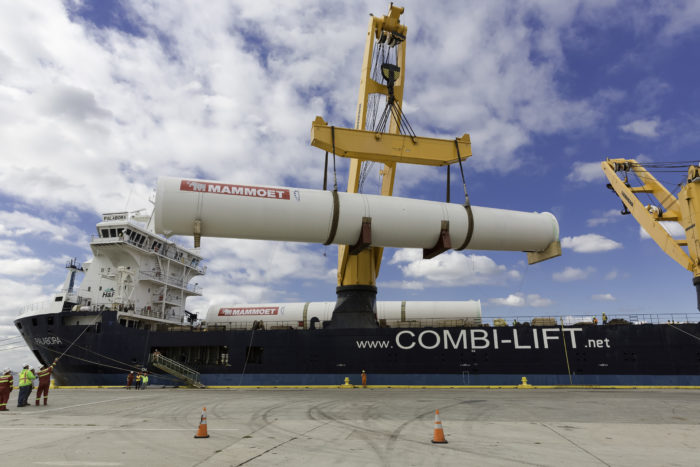
The giant legs for the New York Wheel being offloaded from a ship at the South Brooklyn Marine Terminal (Photo by Kreg Holt)
To build the giant New York Wheel on Staten Island, it helps to have a place to ship all of the parts. The 18-foot wide, 500-ton legs, which will ultimately support a Ferris wheel 630 ft. tall, needed a port to land after their shipboard journey from the manufacturing plant in Italy. Turns out, Brooklyn could handle the job. When the humongous legs arrived last October, they were offloaded in Brooklyn’s Sunset Park at a site that had long been dormant: the South Brooklyn Marine Terminal.
The reactivation of the terminal is expected to contribute to the region’s growing economy, including the surge of business at such South Brooklyn hubs as Industry City and the Brooklyn Army Terminal. The marine terminal stands to play a vital link in the regional transportation system, since it’s the only maritime industrial site in Brooklyn, Queens and Long Island capable of handling ocean-going vessels and freight railroad shipments east of New York Harbor, according to the terminal’s operator, the New York City Economic Development Corp. (NYCEDC).
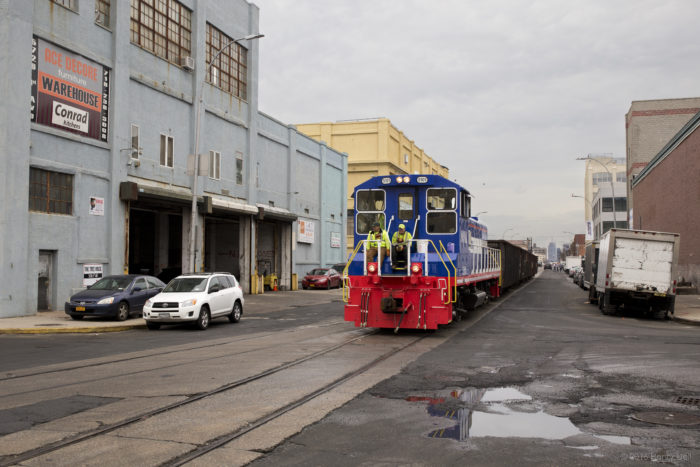
A train engine near the marine terminal pulls four gondolas of compressed scrap metal down 1st Avenue towards the 65th Street Yard (Photo by Henry Dell/Flickr)
The renovation of the 88-acre terminal took a decade and about $115 million to bring it up to modern standards, with an updated electrical system and railroad infrastructure. The terminal, situated on Second Avenue between 29th and 39th streets, connects by rail to Brooklyn’s 65th Street Rail Yard, which in turn connects to points beyond over the New York & Atlantic Railway. The terminal will serve as a waterway hub as well, offloading much of its cargo onto barges, which will then make their way to other parts of the city and the Tri-State Area.
The marine terminal now offers attractive alternatives to trucks for hauling freight at time when the city’s highways are increasingly clogged, the Brooklyn-Queens Expressway being a painful example. Ninety-one percent of all freight in the New York area moves by truck, according to a recent report. Railroad and barges can be more efficient and less polluting. “Businesses, when they locate in an area, they want a lot of choices when it comes to their transportation options and so Sunset Park is well poised for that,” said Joshua Nelson, senior vice president of the NYCEDC for transportation systems. The result, he said, is that businesses in the neighborhood pay less for transportation costs.
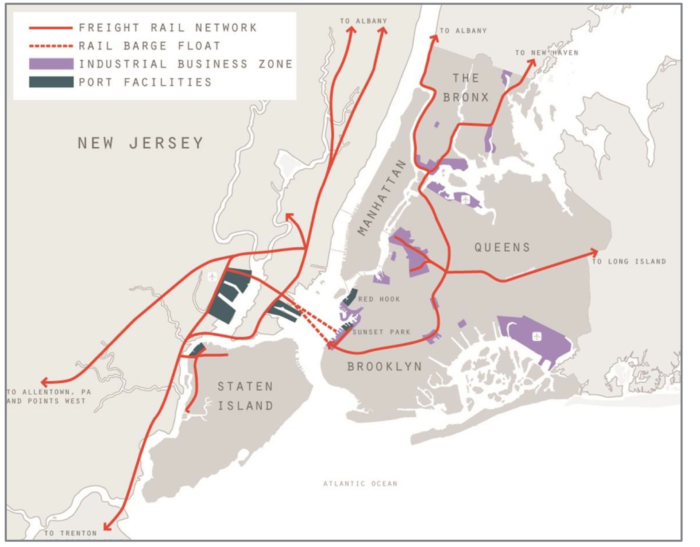
Map shows how the South Brooklyn Marine Terminal in Sunset Park connects by ship and rail to other parts of the region (Map courtesy of the New York City Economic Development Corp.)
Prospective cargo for the marine terminal includes containers (furniture, clothing, food), liquid bulk (fuel, edible oils), dry bulk (grain, sand, cement), roll-on/roll-off freight (cars and trucks), and special projects (gantry cranes, helicopters, boats). The terminal is well suited for the latter category, “special cargo that is for a very specific project,” as with the New York Wheel, said Nelson. The terminal has 1,200 feet of berthing space and 300,000 sq. ft. of warehouse space. The NYCEDC is undergoing a request-for-proposal process in search of “one or more long-term, maritime-dependent commercial and industrial tenants,” according to its website.
For Sunset Park, the renovated cargo terminal is just one element of the neighborhood’s industrial comeback story. The terminal area ties together several NYCEDC facilities, including Bush Terminal, the Brooklyn Army Terminal and the Brooklyn Wholesale Meat Market. These three facilities now house about 170 tenants, and the NYCEDC plans to bring in more companies in categories it describes as traditional manufacturing, advanced manufacturing, food production, and garment making. “Those four areas are really what we’re targeting when we look at new tenants,” said Julie Stein, the NYCEDC’s director for Sunset Park.
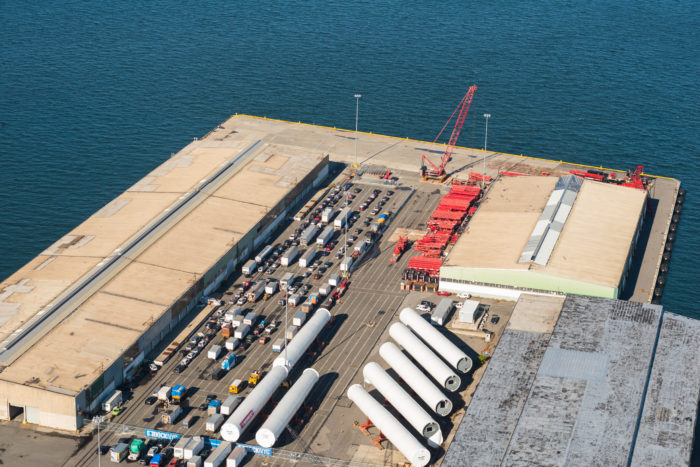
An aerial view of the marine terminal (Photo courtesy of the NYCEDC)
In February, Mayor de Blasio announced a $136 million plan to create a “Made in New York” campus for garment manufacturing as well as film and TV production in Bush Terminal. “This is going to be a 21st century working waterfront that keeps our city the capital of film and fashion,” stated Alicia Glen, the deputy mayor for housing and economic development.
Yet the marine terminal reactivation almost didn’t happen, thanks to a dispute between de Blasio and local City Councilman Carlos Menchaca. The councilman wanted more community control of the site, a job-training program, and funds for public spaces like Bush Terminal Park, as DNAinfo reported. In the course of settling the standoff, a Sunset Park Task Force was created to reach out for more input from community groups, businesses and elected officials.
Part of the mission is to create well-paying industrial jobs in the neighborhood for people of all educational backgrounds, said Stein. Longshoremen, skilled tradesmen, and vehicle handlers will be needed, as well as workers for growing businesses all around the terminal area. “With these properties along the south Brooklyn waterfront,” said Stein, “We’re able to really create a home and a real anchor for industrial businesses and make sure that these companies have a place to go.”
An earlier version of this story said that Industry City is managed by the New York City Economic Development Corp. In fact, the complex is owned and managed by a joint venture.






